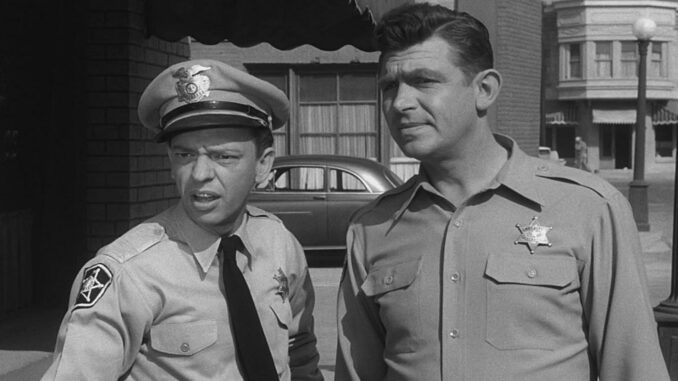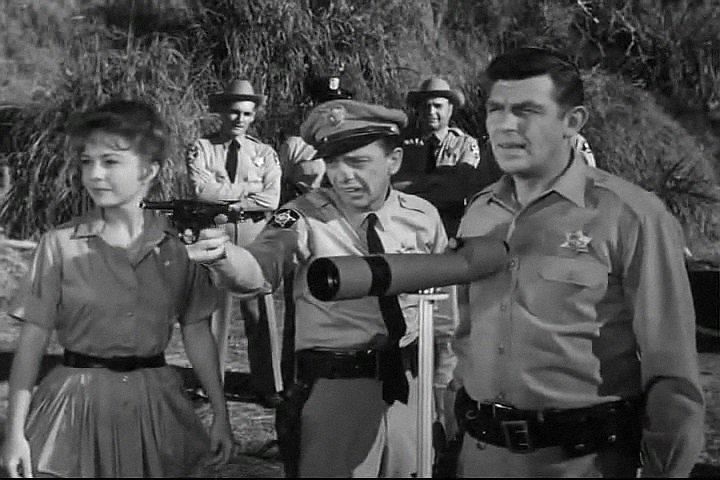
Introduction: The Genius Behind Mayberry’s Humor
Ever wonder why The Andy Griffith Show still feels timeless, even decades later? It wasn’t just the southern charm or the lovable characters. According to Ron Howard—Opie himself—Andy Griffith had a very specific rule about comedy that shaped the entire tone of the show. And here’s the kicker: Andy used to kill jokes on purpose. Why? Because his approach to humor was radically different—and wildly effective.
Let’s peel back the curtain on this old-school TV classic and explore how Andy Griffith’s unexpected comedy rule helped create one of the most beloved shows in American television history.
The Comedy Rule That Made Andy Say “No” to Jokes
Andy Griffith Didn’t Want to Be the Funny Guy
Most sitcom leads love a punchline, right? Not Andy. According to Ron Howard, Andy believed the show worked best when he played the straight man. Instead of grabbing the spotlight, he gave it to the quirky cast around him—Barney Fife (Don Knotts), Gomer Pyle (Jim Nabors), and the rest of the gang.
“Andy would read a script, and if there was a joke written for him, he’d often cut it,” Ron Howard once said.
“Let the Joke Breathe” — Andy’s Style of Humor
Andy believed that a joke works better when it’s not forced. If a moment was too obviously written for a laugh, he’d rewrite or remove it entirely. That might sound counterintuitive, but it was pure genius.
Ron Howard: Learning Comedy By Watching Andy
A Young Actor in a Masterclass of Timing
Ron Howard grew up in front of the camera, but it was behind the scenes where he learned the deeper lessons of comedy. Andy taught him that subtlety often trumps slapstick, and restraint could be funnier than exaggeration.
Howard Called Andy’s Approach “Surgical”
Ron once described Andy’s editing of jokes as “surgical.” He didn’t hate jokes—he hated bad jokes. Especially ones that felt cheap or out of character. His aim? Authenticity over easy laughs.
The “Kill the Joke” Mentality That Worked Wonders
Why the Show’s Humor Feels Real, Even Today
Watch any episode of The Andy Griffith Show and you’ll notice something rare: the comedy feels natural. That’s not by accident. Andy’s refusal to mug for the camera allowed the show to stay grounded in character, not just gag.
Don Knotts Got the Laughs—And Andy Was Fine With That
Barney Fife, played by Don Knotts, was the goofball. Andy was the calm center. This dynamic created a comedic balance that was both heartwarming and hilarious.

Sitcoms Then vs. Now: What’s Missing Today?
Modern Shows Rely Heavily on Punchlines
A lot of today’s sitcoms rely on quick, punchy dialogue that’s written to land laughs every 30 seconds. But does it always work? Compare that with The Andy Griffith Show, which focused on situational humor, not rapid-fire gags.
The Lesson? Sometimes Less Is More
Andy’s approach shows us that comedy doesn’t always need to shout. Sometimes, a quiet moment, a knowing look, or a slow build delivers a much bigger payoff.
Why Andy’s Rule Was Revolutionary
Breaking the Comedic Mold of the 1960s
In a decade filled with slapstick and canned laughter, Andy took a risk by dialing it down. His goal? To build a world that felt real—and that people could relate to.
He Trusted the Audience’s Intelligence
Andy didn’t believe viewers needed to be spoon-fed punchlines. He trusted them to get the humor, even when it was subtle.
Andy Griffith’s Influence on Modern Storytelling
Ron Howard Took Those Lessons to Hollywood
It’s no coincidence that Ron Howard became one of Hollywood’s most respected directors. He carried Andy’s storytelling values—subtlety, character-driven plots, and emotional depth—into his films.
Shows Like The Office Use Similar Principles
You can draw a direct line from Mayberry to Scranton. The Office also thrives on awkward silences, dry humor, and character quirks over big jokes. Andy’s fingerprints are all over today’s best comedies.
Behind the Scenes: How Scripts Were Shaped
Writers Were Told Not to Overwrite Jokes
Writers for the show quickly learned: don’t overwrite. Andy wanted lines that sounded real, not rehearsed. If it felt like a gag, it was likely getting cut.
Improvisation Was Welcome, But Only If It Fit
While the show wasn’t entirely improvised, there was room for actors to bring in natural touches—as long as it kept things grounded.
How Andy’s Rule Kept the Show Timeless
Humor Ages Poorly—But Heart Doesn’t
Jokes from the 1960s might not land today. But moments from The Andy Griffith Show still make us smile. Why? Because the show focused on real human behavior, not just setups and punchlines.
It Wasn’t Just About Laughs—It Was About Values
Andy’s rule wasn’t just strategic—it was moral. He wanted a show that reflected decency, honesty, and connection. That’s why the humor still works.
Andy Griffith: The Unsung Genius of Comedy
He Wasn’t Just an Actor—He Was a Visionary
People often remember Andy as the quiet sheriff, but behind the scenes, he was the showrunner in spirit. He helped guide tone, edit scripts, and mold the show’s entire atmosphere.
He Knew Comedy Begins With Character
The biggest lesson Andy left us with? Comedy starts with character. Build believable people, and the laughs will follow naturally.
The Andy Griffith Show’s Lasting Legacy
Still Syndicated, Still Loved
More than 60 years later, The Andy Griffith Show continues to air. It speaks volumes about the power of storytelling rooted in character—and a little comedy rule that made all the difference.
Ron Howard Credits Andy for His Own Success
Ron Howard has said it plainly: his time on the show, and Andy’s mentorship, were foundational to everything that came after.
Conclusion: When “Killing Jokes” Made the Show Come Alive
In a world where laugh tracks and one-liners often dominate, The Andy Griffith Show stands out as a masterclass in restraint. Andy Griffith didn’t want cheap laughs—he wanted authenticity. His bold rule to “kill the jokes” wasn’t anti-comedy. It was anti-fake. And in doing so, he created a legacy of laughter that still rings true today.
So next time you watch an episode and chuckle at Barney’s antics or Opie’s innocence, remember: it’s probably because Andy chose not to go for the laugh.
FAQs
1. Why did Andy Griffith avoid telling jokes on his show?
Andy wanted the humor to come naturally from the characters and situations, not forced punchlines. He felt this made the show more authentic and timeless.
2. Who got the majority of laughs on The Andy Griffith Show?
Don Knotts, as Barney Fife, delivered most of the overt humor, while Andy played the calm and grounding presence.
3. Did Ron Howard learn from Andy Griffith’s comedy rule?
Absolutely. Ron Howard often speaks about Andy’s influence on his storytelling approach and directing career.
4. Was Andy Griffith involved in writing the show?
While not always credited, Andy had major input in editing scripts, shaping tone, and ensuring the show stayed true to its voice.
5. Are there other shows that used Andy Griffith’s comedy style?
Yes. Modern shows like The Office, Parks and Recreation, and even Ted Lasso use character-driven, understated humor—clearly influenced by Andy’s legacy.
